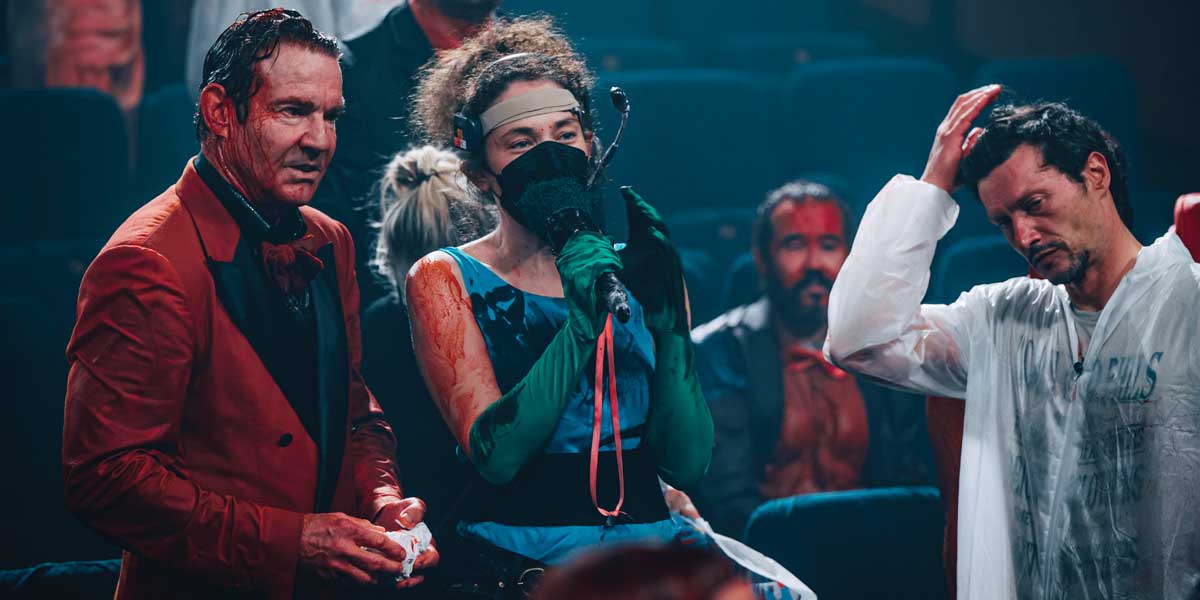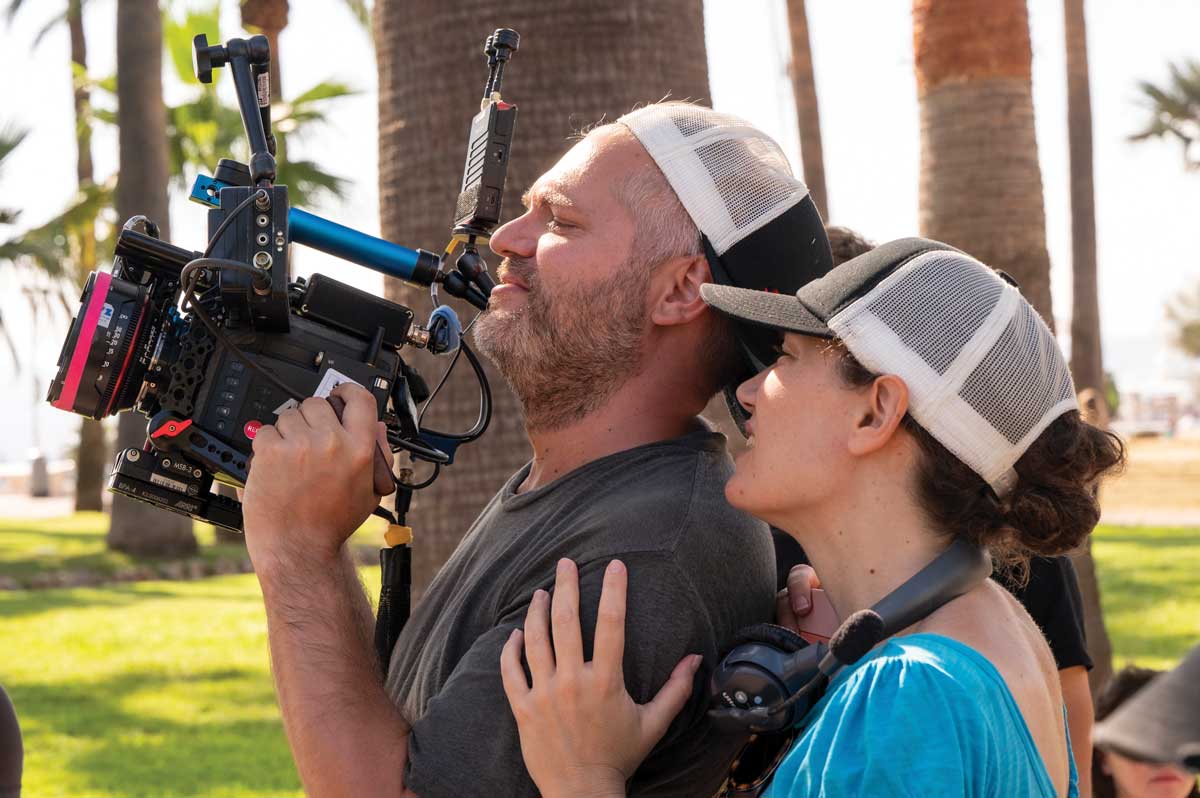
The Substance
Posted on Nov 22, 2024 by Samara Husbands
Ripple Effect
Demi Moore-starring body horror The Substance boasts some of the most outlandish VFX seen in recent cinema. The team at Noid Studio explain how they created the film’s spectacularly gory sequences
A horror film without some form of terror-inducing visual effects would be incomplete, but with plenty of blood and gore to go around, standing out from the crowd is no easy task. Teeming with grotesque transformations, organ spillage and blood-spatter galore, The Substance is the sophomore feature of French director Coralie Fargeat, a film that picks apart the shallowness – and dangerous potential – of the beauty industry.
Starring Demi Moore and Margaret Qualley as faded Hollywood star Elisabeth Sparkle and her younger counterpart Sue respectively, the plot revolves around the titular ‘substance’. This dubious green serum allows Elisabeth to spawn a younger, improved version of herself – Sue – who, in a gruesome twist, climbs forth from her spine. Conveniently, Sue is able to replace Elisabeth as host of her long-running aerobics show – after Elisabeth is axed for being too old.
Making a splash
From festering wounds to the final grisly iteration of Elisabeth Sparkle, ‘Monstra’, Noid Studio was commissioned to work on the gory extravaganzas – fuelled by Elisabeth’s overuse of the substance – which would become the film’s main talking point. VFX supervisor Chervin Shafaghi was responsible for the film’s final sequence – an off-the-wall, breathtaking showcase of horror imagery which uses innovative VFX techniques.
“We were involved on two beautiful creatures,” Shafaghi teases. “I can’t say beautiful in the film, but it was very cool to work with these two assets. Working alongside Bryan Jones, production VFX supervisor, we collaborated closely with Coralie to define the look of her creature. A lot of it was based on Pierre Olivier Persin’s prosthetics.”
The two monsters comprised Monstra and the ‘crawling bug’ Moore’s character eventually becomes. Employing Persin’s Monstra suit as the foundation for the VFX, Shafaghi and his team had to finesse the edit they were provided with, as well as applying animation. This included creating an animated version of Demi Moore’s face which would be attached to the prosthetic suit to bring the inanimate model to life.
“We did what we call a volumetric scan of Demi Moore – it’s basically a static scan but with a camera,” explains Shafaghi. “The result is a reproduction of Demi’s performance exactly as it was directed by Coralie.
“We had to match everything from the set, so there wasn‘t a lot of room for creativity at the beginning because it was more about how we could enhance the ideas than bringing in anything new.”
However, recreating the visage of an icon like Moore was no small feat. “It was the likeness of someone everybody knows, so it was very challenging for us to produce,” says Shafaghi.

Horror inspirations
Another (somewhat complicating) factor was that Fargeat gave Noid Studio a mood board of eighties movies to draw inspiration from, which had to feed into the overall look and feel.
“We didn’t have as much difficulty doing a CG version of Demi because it wasn’t just creating the realistic look of an actor, but more trying to figure out which points we should enhance on the body to help people recognise Demi Moore,” reflects Shafaghi.
“We also had to be able to produce a little bit of movement around the eyes, for example, and the mouth. Coralie asked us to show her how we could achieve this animation and still match the film’s look.”
References spanned everything from The Thing to The Fly, while Noid Studio suggested looking to the Netflix series Stranger Things for more modern animation techniques. “We kept looking back at the rest of the movie because there were other scenes that could help inform the look, the texture of the skin and other elements like this. We needed to match this every time,” Shafaghi adds.
This was both a boon and a challenge. “Our animation team had to figure out how to improve everything while retaining the feeling of these old-school movies,” says Shafaghi. “It was very new for us, but it was kind of cool. I grew up during the generation of these older movies. Some of the youngest animators, they were told to look at these movies as references so they could develop a feel for the styles when they were working and animating. They were also advised to keep in mind that they didn’t need to follow them exactly or be perfect.”
Finer details
It was a balancing act to maintain the rough-hewn quality of the film with the high level of detail promised by VFX techniques. “When we’re working on someone’s face, we need a lot of data and we try to be as detailed as possible – especially with the skin and other very specific features,” insists Shafaghi.
“But on this one, we liked to break up the physical part of our work somewhat. If we need to match pores, for example, on someone’s skin, we had to break this to be able to refine the look of the prosthetic – the more silicon look. So we needed to start with something very detailed, then go back to what Persin had done on-set with the skin of the monster – and the same for the texture of the crawling bug.
“We did a lot of reviews and iterations to figure out which details we could add or had to remove to find the start of Demi’s face. It wasn’t just doing her face, it was doing it while it was stuck on the body, working out how we could blend it with the prosthetic.”
Every minute change was returned to Fargeat so she could check them and ensure the emotions of the creatures were portrayed just right.
“Every time we changed the camera angle, for example, we could lose her,” says Shafaghi. “Sometimes we’d send a version that was exactly the same shot but with a tiny bit of detail around the eyes altered. That might have lost the essence of Demi in Coralie’s eyes. We then had to quickly figure out what changed or identify what we need to preserve every time we showed her a different angle or different shot, to ensure she’d be happy with the final product.”

Happy endings
Ultimately, emotion was the top priority for Fargeat, states Shafaghi, and getting that right was essential. “At the end of the film, it’s happiness that appears on Demi’s face – the release, the relief of everything. Since we did a technical reshoot, we managed to get exactly the emotion we wanted without trying to match other scenes.”
Rather than making the visual effects obvious, the aim was to make them disappear and blend into the prosthetics. “I was in a screening a few days ago, and some people asked, ‘What have you actually done?’ That’s the best compliment we can get at this point.”
In total, it took one year to fine-tune the VFX. “It’s not that many shots, but it was very difficult work to do,” recalls Shafaghi. “It was the first time we were able to work with this level of data for a movie, so it was very cool and very important to get right.”
This feature was first published in the December 2024 issue of Definition.








